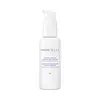What's inside
What's inside
 Key Ingredients
Key Ingredients

 Benefits
Benefits

 Concerns
Concerns

No concerns
 Ingredients Side-by-side
Ingredients Side-by-side

Water
Skin ConditioningDimethicone
EmollientGlycerin
HumectantPropanediol
SolventSea Silt Extract
Skin ConditioningAmmonium Acryloyldimethyltaurate/Vp Copolymer
Octyldodecyl Myristate
EmollientBiosaccharide Gum-1
HumectantSodium Hyaluronate
HumectantSpirulina Platensis Extract
Skin ProtectingXylitylglucoside
HumectantButylene Glycol
HumectantAllantoin
Skin ConditioningPentylene Glycol
Skin ConditioningUrea
BufferingPolysilicone-11
Hexylene Glycol
EmulsifyingAluminum Starch Octenylsuccinate
AbsorbentAnhydroxylitol
HumectantCaprylyl Glycol
EmollientDecyl Glucoside
CleansingXylitol
HumectantSodium PCA
HumectantTrehalose
HumectantFructose
HumectantSodium Lactate
BufferingDisodium EDTA
Maltose
MaskingGlucose
HumectantPotassium Phosphate
BufferingDipotassium Phosphate
BufferingCitric Acid
BufferingSodium Hydroxide
BufferingSodium Chloride
MaskingMalic Acid
BufferingPhenoxyethanol
PreservativeEthylhexylglycerin
Skin ConditioningCI 42090
Cosmetic ColorantWater, Dimethicone, Glycerin, Propanediol, Sea Silt Extract, Ammonium Acryloyldimethyltaurate/Vp Copolymer, Octyldodecyl Myristate, Biosaccharide Gum-1, Sodium Hyaluronate, Spirulina Platensis Extract, Xylitylglucoside, Butylene Glycol, Allantoin, Pentylene Glycol, Urea, Polysilicone-11, Hexylene Glycol, Aluminum Starch Octenylsuccinate, Anhydroxylitol, Caprylyl Glycol, Decyl Glucoside, Xylitol, Sodium PCA, Trehalose, Fructose, Sodium Lactate, Disodium EDTA, Maltose, Glucose, Potassium Phosphate, Dipotassium Phosphate, Citric Acid, Sodium Hydroxide, Sodium Chloride, Malic Acid, Phenoxyethanol, Ethylhexylglycerin, CI 42090
Water
Skin ConditioningIsononyl Isononanoate
EmollientGlycerin
HumectantPropanediol
SolventC10-18 Triglycerides
EmollientC14-22 Alcohols
Emulsion StabilisingNiacinamide
SmoothingSodium Hyaluronate
Humectant1,2-Hexanediol
Skin ConditioningHydroxyethyl Acrylate/Sodium Acryloyldimethyl Taurate Copolymer
Emulsion StabilisingSqualane
EmollientDimethicone
EmollientCetyl Palmitate
EmollientC12-20 Alkyl Glucoside
EmulsifyingSodium Gluconate
Skin ConditioningCaprylhydroxamic Acid
Polysorbate 60
EmulsifyingXanthan Gum
EmulsifyingSorbitan Isostearate
EmulsifyingGlucose
HumectantCI 77891
Cosmetic ColorantWater, Isononyl Isononanoate, Glycerin, Propanediol, C10-18 Triglycerides, C14-22 Alcohols, Niacinamide, Sodium Hyaluronate, 1,2-Hexanediol, Hydroxyethyl Acrylate/Sodium Acryloyldimethyl Taurate Copolymer, Squalane, Dimethicone, Cetyl Palmitate, C12-20 Alkyl Glucoside, Sodium Gluconate, Caprylhydroxamic Acid, Polysorbate 60, Xanthan Gum, Sorbitan Isostearate, Glucose, CI 77891
 Reviews
Reviews

Ingredients Explained
These ingredients are found in both products.
Ingredients higher up in an ingredient list are typically present in a larger amount.
Dimethicone is a type of synthetic silicone created from natural materials such as quartz.
What it does:
Dimethicone comes in different viscosities:
Depending on the viscosity, dimethicone has different properties.
Ingredients lists don't always show which type is used, so we recommend reaching out to the brand if you have questions about the viscosity.
This ingredient is unlikely to cause irritation because it does not get absorbed into skin. However, people with silicone allergies should be careful about using this ingredient.
Note: Dimethicone may contribute to pilling. This is because it is not oil or water soluble, so pilling may occur when layered with products. When mixed with heavy oils in a formula, the outcome is also quite greasy.
Learn more about DimethiconeGlucose is a simple sugar and is the most important source of energy in all organisms.
In skincare, glucose is used to hydrate the skin. It also acts as a prebiotic for our natural biome.
Glucose is hydrating due to its humectant property. As a humectant, glucose draws moisture from the air and from deeper levels in the skin.
Our skin contains many sugars that act as prebiotics and help strengthen our natural microbiome. Having a healthy microbiome helps protect our skin from harmful bacteria and other contaminants.
Studies show glucose may help with fading discoloration and pigmentation. This is because our skin metabolizes glucose into lactic acid. Lactic acid is an AHA that helps exfoliate the top layer of skin.
Learn more about GlucoseGlycerin is already naturally found in your skin. It helps moisturize and protect your skin.
A study from 2016 found glycerin to be more effective as a humectant than AHAs and hyaluronic acid.
As a humectant, it helps the skin stay hydrated by pulling moisture to your skin. The low molecular weight of glycerin allows it to pull moisture into the deeper layers of your skin.
Hydrated skin improves your skin barrier; Your skin barrier helps protect against irritants and bacteria.
Glycerin has also been found to have antimicrobial and antiviral properties. Due to these properties, glycerin is often used in wound and burn treatments.
In cosmetics, glycerin is usually derived from plants such as soybean or palm. However, it can also be sourced from animals, such as tallow or animal fat.
This ingredient is organic, colorless, odorless, and non-toxic.
Glycerin is the name for this ingredient in American English. British English uses Glycerol/Glycerine.
Learn more about GlycerinPropanediol is an all-star ingredient. It softens, hydrates, and smooths the skin.
It’s often used to:
Propanediol is not likely to cause sensitivity and considered safe to use. It is derived from corn or petroleum with a clear color and no scent.
Learn more about PropanediolSodium Hyaluronate is hyaluronic acid's salt form. It is commonly derived from the sodium salt of hyaluronic acid.
Like hyaluronic acid, it is great at holding water and acts as a humectant. This makes it a great skin hydrating ingredient.
Sodium Hyaluronate is naturally occurring in our bodies and is mostly found in eye fluid and joints.
These are some other common types of Hyaluronic Acid:
Learn more about Sodium HyaluronateWater. It's the most common cosmetic ingredient of all. You'll usually see it at the top of ingredient lists, meaning that it makes up the largest part of the product.
So why is it so popular? Water most often acts as a solvent - this means that it helps dissolve other ingredients into the formulation.
You'll also recognize water as that liquid we all need to stay alive. If you see this, drink a glass of water. Stay hydrated!
Learn more about Water